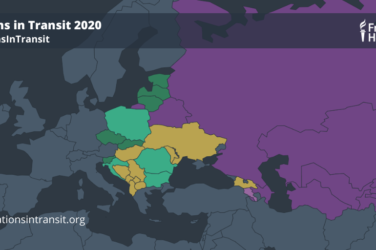Public policies are introduced for different reasons. Sometimes, it is because a problem is perceived to be looming and governments seek to be proactive – move now and danger can/might be forestalled. An example is climate change. Even if the phenomenon is upon us, and in this sense action should ideally have been taken a good while back, measures taken now may still significantly reduce the adverse consequences of global warming. This sort of policy can be labelled forestalling policy (FP).
On (alas) many other occasions the policies are formulated after the problems have struck with full force. The aftermath of the global financial crisis is a textbook case. Here the policies are brought in desperately to show that the authorities recognize that crisis management is needed. This kind of policy can be called knee jerk reactions (KJR).
In certain circumstances policies are visionary. They are formulated because a government may perceive that a change of the shape of society would be highly desirable. This happened in several West European countries when they introduced far reaching social welfare legislation after the 1945 conflicts. These policies, rare but epoch defining, we label visionary policies (VIP).
In all three frameworks, the emphasis is put on legislation. The laws/regulations will generally contain a mix of sticks (to deter actors from doing negative things) and carrots (incentives to encourage positive efforts). Although any given policy will have its own characteristics – generalization is tricky – the chances are that FP and KJR type policies will leave plenty of scope for disputes about what they really say and how they should be implemented. Put another way: these policies, however well drafted, are more or less guaranteed to lead to innumerable court cases, as various parties seek to interpret them in their own ways.
VP policies, while clearly affecting everyone, are less liable to provoke the same behavior. The policies share then the feature that the law and legal processes are seen as the mechanism through which actions will be monitored. The possibility that private entities might be coaxed into doing what is desired by methods other than the law does not generally receive serious consideration.
Whether FP, KJR or VIP are involved, in democratic societies public policy making on domestic issues goes through all kinds of approaches. These approaches seek to satisfy criteria that include: adequate consultation; timely intervention; effective implementation; and the prospect of significant benefits from the policy. For long periods the dominant model in democracies would seem to have been based on the following four step sequence.
First, consult with all interested parties, try to ensure that there are significant discussions among the private groups (including civil society), and seek to synthesize a more or less agreed basis for action.
Second, check the emerging platform for action against experience from other countries seeking to tackle similar problems (“best practice”). Where relevant, incorporate ideas (both conceptually and operationally) from those comparative experiences.
Third, formulate draft legislative measures for discussion in national parliaments (or similar legislative bodies) and enact legislation, following it through with necessary regulations issued by the appropriate ministries or bodies responsible for the matters under consideration.
Fourth, try to implement the legislation, maybe via creating authorities responsible for compliance (for example, public hygiene entities for inspection of facilities) and empowering them to take necessary action against those found to transgress the law. The time involved for completing these steps can of course vary substantially from place to place and issue to issue. Whatever it is, proper communication methods and channels have to be created so that everyone is aware of their responsibilities and obligations.
This somewhat mechanistic perspective started to come under serious scrutiny a few years ago. In part this was because the inevitable conflicts among different interest groups meant that much, if not most, legislation was seen by many to frequently be weak and confusing, generating numerous possibilities for the affected parties to find ways to circumvent the real purpose of the laws.
In part, however, criticism emanated from those with well -founded doubts concerning the wisdom of proceeding primarily through a law/penalty process. Would it not be more sensible to try and devise clever systems of incentives (including but not confined to monetary carrots ) that would persuade the economic actors that it was in their interest to behave in the ways that the government itself wanted? Decades ago the approach was tried in the realm of smoking, though it had to pass the filter of legislation regarding the information which cigarette and tobacco producers would have to publish on their products (the process has gone to ever more dramatic forms of information, and the cigarette advertising struggle continues).
This line of thinking, refined and practised (in social experiments and in work under the Obama Administration) by leading American lawyers and social scientists, especially Cass Sunstein and Richard Thaler, has indeed produced a number of valuable results and introduced productive collaboration among lawyers, economists, administrative experts and many others. Moreover, as mentioned by the above authors and confirmed by experiences elsewhere, the notion of appealing to self-interest has been put into operation by quite a number of countries and now forms a recognized way of seeking to obtain effective social outcomes.
It has come to be known under the umbrella of “nudge”. Instead of forcing people to do things under threat of potentially severe legal penalties, a method which automatically generates tensions and invites economic actors to discover smart means to avoid the law, the idea is to seduce them into voluntary collaboration. This method, where successful, has also been found to yield notably better social cost/benefit outcomes than the more traditional methods.
Furthermore, “nudge” is amenable to experimental designs that allow the best packages of incentives to be developed. Careful work with the groups affected by the problems permits in-depth knowledge to be acquired about the things that affect them, and thus increase the chances that sensible incentives can be designed. This experimental dimension is able to draw on, among others, the work of Esther Duflot and her colleagues seeking to elucidate better practical means of tackling poverty problems in a range of countries.
Many of the practical issues tackled have been in areas that would best be classified as micro, project or meta. But what happens when we move to the macro field? Is it possible to nudge on, say, Central bank policy? Does it make sense to nudge on foreign investment? On food safety standards? These questions and many others come to mind as President Elect Trump prepares to be inaugurated this coming Friday.
Even prior to taking office, Mr Trump has made use of another approach to achieving desired results. It effectively equates direct action with policy. We can best designate it as “shove”, meaning directly arm twisting and cajoling private sector decision makers to either reverse decisions made or stop the decisions being taken in the first place. Mr Trump is doing this to selected global brand companies, in highly visible operations. Lets leave aside the details (important though they are) as to whether or not Carrier or Ford will actually lose out through ostensibly taking measures to keep in the US existing jobs that were planned for transfer to Mexico (the Carrier case), or altering investment decisions that would have created new jobs in Mexico rather than the US (the Ford case). Instead, let’s check out what are the prospects for “shoving policy”.
There seem to be some base conditions needed for successful shoving. First, it helps hugely to have a policy goal that seems simple to identify and about which people can apparently see immediate results. Jobs is the goal here, and on the surface it should not be difficult to observe whether they have disappeared or been created (meaning, a successful shove has been done).
Second, the policy maker or doer (in this case, Mr Trump himself) should have every prospect of producing a very quick result. This is good not only for publicity but also because it can create a self –fulfilling policy prophecy. Once a few firms act, the chances others will follow are sharply increased. You could say that one or two almighty shoves can, domino style, set in motion a whole series of nudges. Of course, Mr Trump had announced, prior to beginning the exemplary shoves, a few nasty threats about what might happen to miscreants if they did not behave as he wished. So it seems that “pure shoving” has yet to be tried – so far, its been mixed, classical style, with putative penalties (whether there are also undercover incentives in play is too early to say).
Third, it probably also helps enormously if the shover occupies a position of considerable clout. If he does, the credibility of any threats rises substantially, the publicity is guaranteed, and the chances that those succumbing to the shove might reap some rewards in the future go up (particularly if the shover is sure to stay in position for a long time).
But some questions do arise. Is shoving sustainable? Can shoving be carried out by lesser mortals than those holding crucial political and economic power? In a democratic setting, shoving on the sidelines of normal processes might lead to suspicions that a personality cult is being shaped, and/or that the shoving is being done to support ideas held by the shover but not necessarily by many others – is shoving democratic? What happens if shoving meets organized resistance?
The possibility that shoving could be used by more than an extremely small number of individuals seems remote. Anyone other than a person who is the political Head of State who tried to employ the approach would surely have to do so with the support, explicit or implicit, of the political leader. To act without that backing would simultaneously be seen as a covert attempt to undermine the authority of the political leader, and would also lack credibility. So it appears that, as a policy method, the use of shoving is in effect restricted to a single person.
Can it be employed over a wide range of domestic policy issues? Probably not. For example, Mr Trump announced he wanted to see interest rate rises very quickly and pressured Janet Yellen, Head of the Fed, to get this result. Ms Yellen refused to budge from the Fed’s declared policy. She cannot, however, be removed by a President, even though her post is in the President’s nomination. Hence she can and will remain in office until the end of her current mandate (2018) and interest rate policy will be decided by the Fed. In this case the threat element of the shove is weakened by the institutional rules governing who takes the decisions. On other matters, it is highly unlikely that shove would be used. Thus on problems affecting say public health and hygiene, or public security, it is possible to imagine circumstances in which shove would be employed (say cajoling of pharmaceutical enterprises) but they would in practice not occur very often. Where they did, people could be leaned on to implement, but the policy itself would have been determined earlier.
Is shove sustainable? Put differently, can the “shock of the shove” retains its force long after the first effects have been felt? The chances are that the impact will wear off over time, and anyway the initial circumstances will certainly alter. It would be wrong to criticize shove on this score. Most policies decided in the conventional way suffer the same problem. Indeed, the fact that the standard policy making process often takes so long before completion means that, in quite a few instances, policies only come into full operation after the original problem has either disappeared or has been transformed. Shove places emphasis on speed of action (policy is equated with action). In today’s world, that is not a bad emphasis to have.
The first line of this essay referred to “domestic issues”. Can shove be employed with regard to foreign policy? The President Elect clearly believes it can. He has picked several themes on which his pronouncements are aimed at influencing the attitudes and behavior of other countries. Prominent examples are: NATO, where European members (the vast majority) must think hard about whether they are prepared to contribute much more to the roughly $2.5 billion standing budget and do likewise for the special programs; the EU, where his support for Brexit plus comments about other countries suggest that a process of further splintering would be something he would welcome (in this case, the specific gains for the US are not so easy to pin down); and indeed his warnings to China about maneuvers in the Pacific.
The prospects for successful shoving in the foreign policy realm are shaped by two main things. First, where the US has direct leverage, and the warnings are being issued to sets of countries, there is every chance that the warnings will produce results. Second, if the warning goes to a very powerful country that is ruled in authoritarian fashion, then shoving is most unlikely to succeed. On the contrary, it might be highly counter-productive. In the Chinese case, the government in Beijing has immediately responded with a warning of its own – “the gloves will come off”.
In summary, what is the future of shove and how will it fit into future public policy making?
First, it is likely to enjoy some success in the near future as democracies come under increasing pressure “to act, and to be seen to act”. Leaders who shove can capture the limelight and portray themselves as doing what the people have asked for.
Second, it will be used for highly identifiable issues where complexity does not prevent fast decisions.
Third, some successful shoving can generate subsequent nudging. The two approaches are not, at least in broad outline, necessarily mutually exclusive. The shove can the catalyst for the nudge.
Fourth, in the panoply of policy making methods and tools in democratic societies, the shove will not occupy a prominent place. Standard consultative approaches mixed with nudge will continue to dominate the picture. But the shove might well help to tackle some major problems.
Fifth, the evaluation of the impact of shove awaits more examples. If it succeeds in altering mind sets of private decision makers on at least some issues, then it will have to be qualified as a high benefit tool (provided, of course, that you agreed with the original policy goal). That more examples will be forthcoming should not be doubted. In the era of muscular policy making, the temptation will not be resisted.





